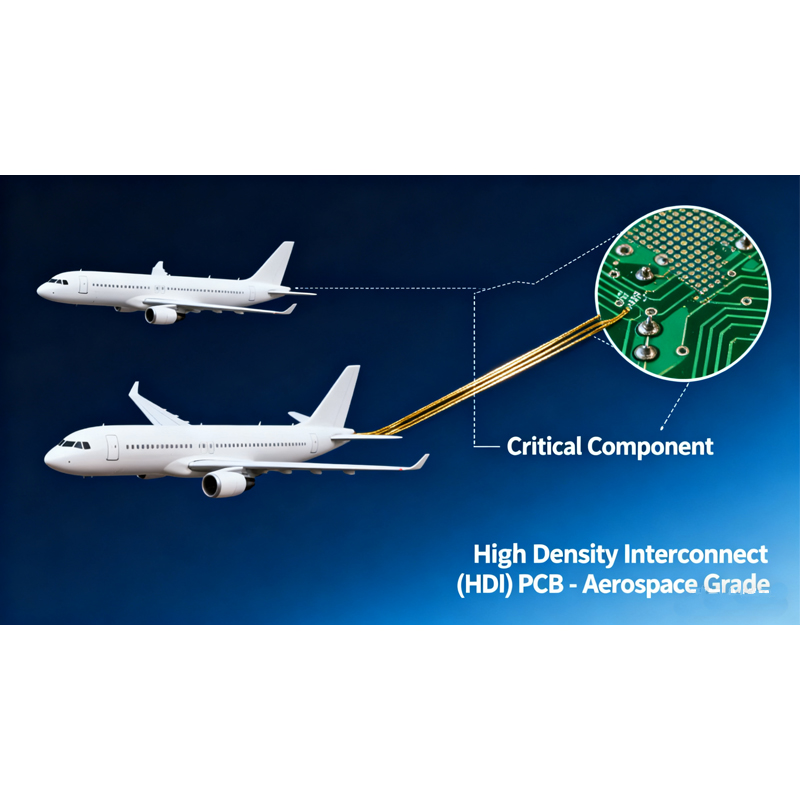Date: 2025-11-12
When your electronics need to survive car engines or airplane cabins, regular circuit boards won't cut it. Here's what's changing in high-density interconnect (HDI) board technology for automotive and aerospace applications.
Better materials that can handle extreme temperatures
Smarter board designs that protect sensitive signals
Manufacturing processes that leave nothing to chance
Base Materials:
We're using specialized substrates that maintain stable electrical properties from -55°C to +150°C. Standard FR-4 materials can't handle these extremes without signal degradation. Materials from suppliers like Rogers and Taconic provide consistent performance for critical systems like automotive radar and aircraft communications.
Copper and Finishes:
Rolled copper foil is becoming standard because it flexes better during temperature cycles without cracking. For surface finishes, immersion gold (ENIG) works for most automotive applications, while aerospace often requires more robust options like ENEPIG that better resist corrosion and support advanced packaging.
Tiny Holes, Big Benefits:
Laser-drilled microvias (as small as 0.08mm) are revolutionizing board design. They're like taking side streets instead of highways - much shorter paths for signals with less electrical interference. This is crucial for high-speed data in advanced driver assistance systems.
Signal Protection:
High-speed signals travel in carefully matched pairs (differential pairs) to cancel out noise. Boards incorporate built-in shielding techniques - either embedded metal barriers or rings of grounding vias - to block interference from other electronics.
Hidden Components:
We're now burying tiny resistors and capacitors inside the board layers. This makes assemblies more robust against vibration, saves surface space, and can improve electrical performance.
Drilling and Plating:
UV lasers create cleaner, more precise holes than older methods. The plating process gets extra attention - we need perfect copper coverage inside those tiny holes with no voids or weak spots.
Layer Alignment:
With multiple layers of dense circuitry, optical alignment systems ensure everything lines up perfectly during lamination. Misalignment means failed connections.
Rugged Assembly:
Critical components get additional protection. Underfill epoxy locks large chips in place, while local stiffeners reinforce areas subject to mechanical stress like connectors.
Stress Testing:
Boards undergo brutal testing - rapid temperature cycling, prolonged vibration, humidity exposure, and salt spray. We need to see how they fail before they reach the field.
Traceability:
Every material batch and manufacturing step gets documented. If something goes wrong years later, we can trace it back to its source.
Backup Systems:
For truly critical functions, redundant circuits provide alternative pathways in case the primary one fails.
Automotive:
Radar systems for collision avoidance
High-speed networking between vehicle systems
Power control units in engine compartments
Aerospace:
Flight control computers
Satellite communications
Radar and sensor systems
The push toward autonomous vehicles and more advanced aircraft is driving circuit board technology forward. Success depends on choosing the right materials, designing for the environment, and executing manufacturing with precision. The goal isn't just making boards work - it's making them work reliably for decades under conditions that would destroy consumer electronics.
Capel manufacturing PCBs since 2009. Professional technology and high-precision Printed Circuit Boards involved in Medical, IOT, UAV, Aviation, Automotive, Aerospace, Industrial Control, Artificial Intelligence, Consumer Electronics etc..